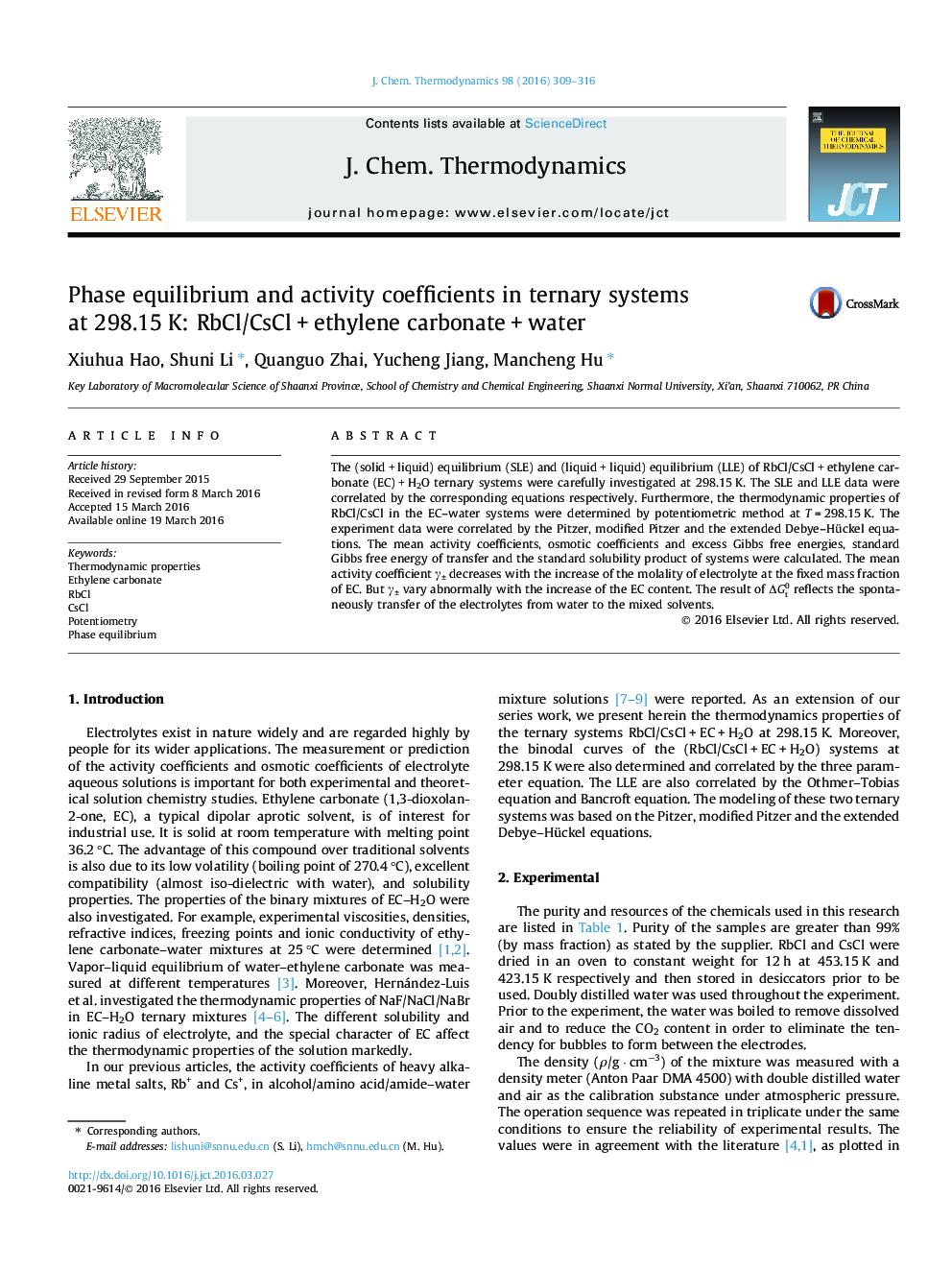| Article ID | Journal | Published Year | Pages | File Type |
|---|---|---|---|---|
| 215008 | The Journal of Chemical Thermodynamics | 2016 | 8 Pages |
•Activity coefficients of RbCl/CsCl in EC + H2O were determined.•Pitzer, modified Pitzer, and extended Debye–Hückel models were used.•The SLE and LLE of RbCl/CsCl + EC + H2O systems were studied.
The (solid + liquid) equilibrium (SLE) and (liquid + liquid) equilibrium (LLE) of RbCl/CsCl + ethylene carbonate (EC) + H2O ternary systems were carefully investigated at 298.15 K. The SLE and LLE data were correlated by the corresponding equations respectively. Furthermore, the thermodynamic properties of RbCl/CsCl in the EC–water systems were determined by potentiometric method at T = 298.15 K. The experiment data were correlated by the Pitzer, modified Pitzer and the extended Debye–Hückel equations. The mean activity coefficients, osmotic coefficients and excess Gibbs free energies, standard Gibbs free energy of transfer and the standard solubility product of systems were calculated. The mean activity coefficient γ± decreases with the increase of the molality of electrolyte at the fixed mass fraction of EC. But γ± vary abnormally with the increase of the EC content. The result of ΔGt0 reflects the spontaneously transfer of the electrolytes from water to the mixed solvents.
Graphical abstractThermodynamic properties, such as mean activity coefficients, osmotic coefficients and excess Gibbs free energies, of the ternary systems RbCl/CsCl + EC + H2O were determined at 298.15 K. Moreover, the (solid + liquid) equilibrium (SLE) and (liquid + liquid) equilibrium (LLE) of RbCl/CsCl + EC + H2O systems were studied at 298.15 K to maintain the homogeneity of the mixtures for potentiometric measurement.Figure optionsDownload full-size imageDownload as PowerPoint slide
